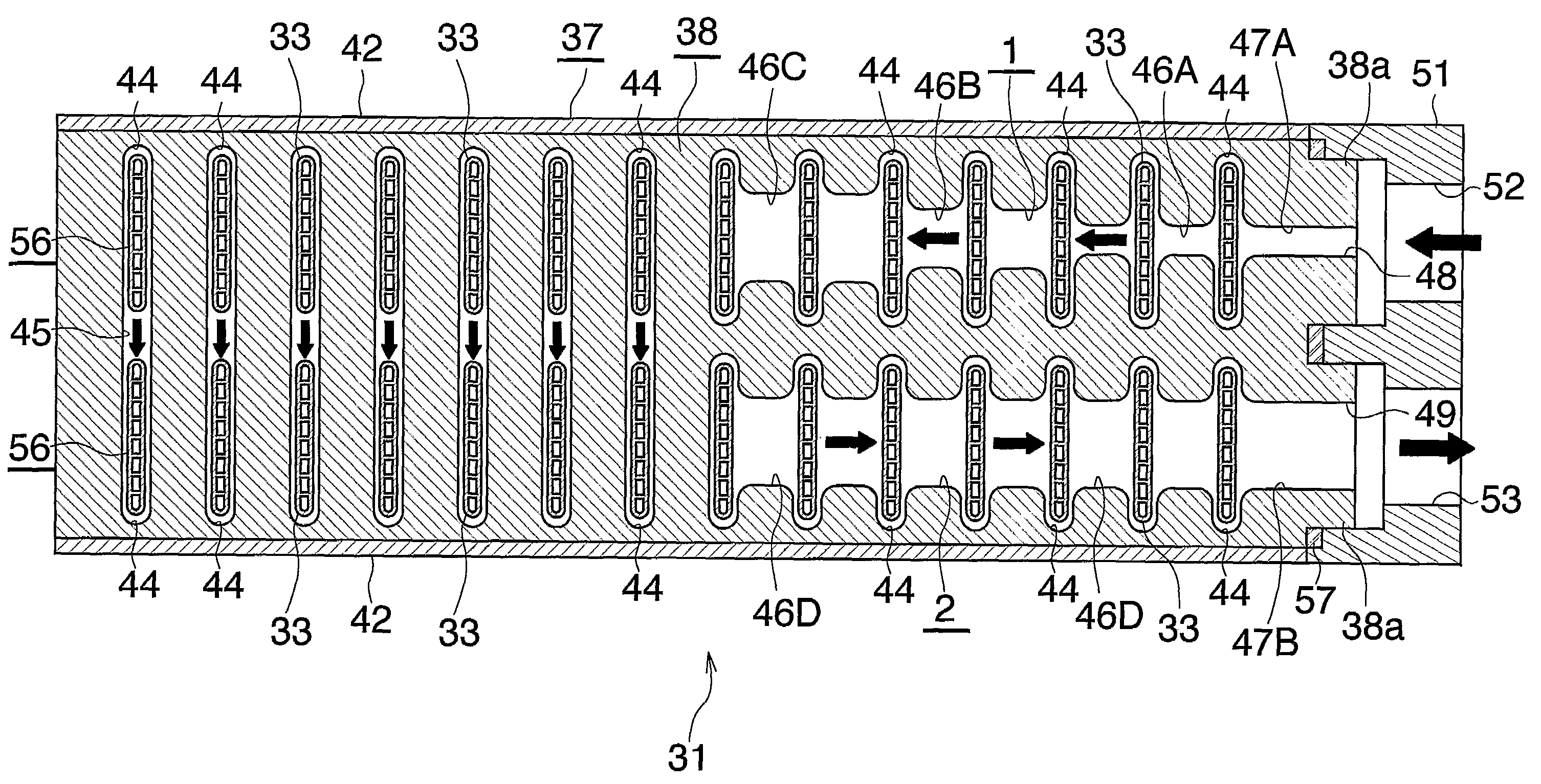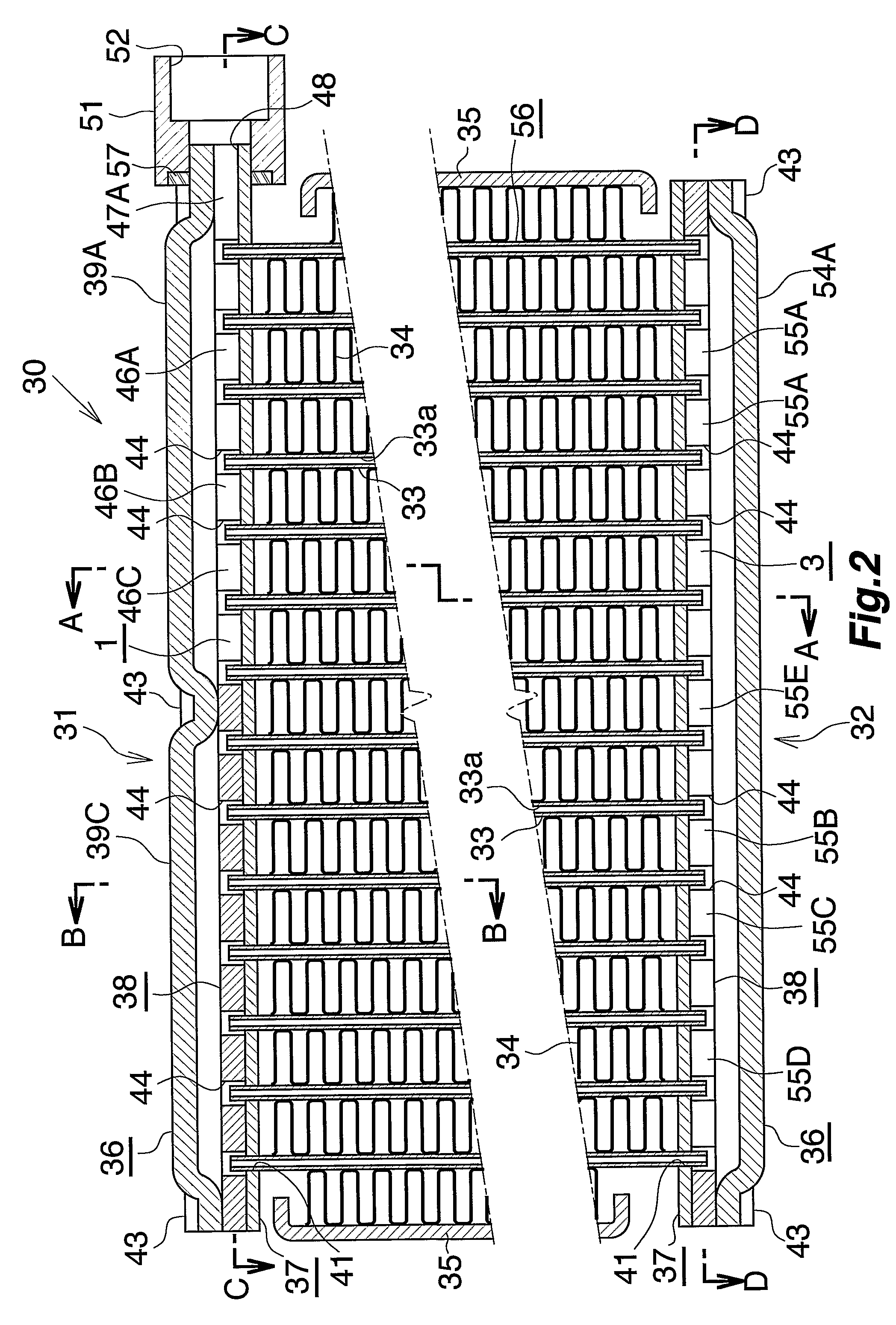Heat exchanger
a heat exchanger and heat exchange technology, applied in the field of heat exchangers, can solve the problems of low efficiency of work for joining the caps, cumbersome procedure for partitioning, and increasing the number of components, so as to improve heat exchange efficiency and improve heat exchange efficiency
- Summary
- Abstract
- Description
- Claims
- Application Information
AI Technical Summary
Benefits of technology
Problems solved by technology
Method used
Image
Examples
Embodiment Construction
[0045]Embodiments of the present invention will be described below with reference to the drawings. This embodiment is a heat exchanger of the invention as adapted for use as an evaporator for supercritical refrigeration cycles.
[0046]FIGS. 1 to 3 show the overall construction of the evaporator embodying the invention, FIGS. 4 to 9 show the constructions of main portions of the evaporator, and FIG. 10 shows the flow of refrigerant through the evaporator of FIG. 1.
[0047]In the following description, the upper, lower, left-hand and right-hand sides of FIGS. 1 and 2 will be referred to as “upper,”“lower,”“left” and “right,” respectively. Further the downstream side (the direction indicated by the arrow X in FIGS. 1 and 10) of flow of air through an air passing clearance between each adjacent pair of heat exchange tubes will be referred to as the “front,” and the opposite side as the “rear.”
[0048]With reference to FIGS. 1 to 3, an evaporator 30 for use in supercritical refrigeration cycle...
PUM
 Login to View More
Login to View More Abstract
Description
Claims
Application Information
 Login to View More
Login to View More - R&D
- Intellectual Property
- Life Sciences
- Materials
- Tech Scout
- Unparalleled Data Quality
- Higher Quality Content
- 60% Fewer Hallucinations
Browse by: Latest US Patents, China's latest patents, Technical Efficacy Thesaurus, Application Domain, Technology Topic, Popular Technical Reports.
© 2025 PatSnap. All rights reserved.Legal|Privacy policy|Modern Slavery Act Transparency Statement|Sitemap|About US| Contact US: help@patsnap.com



